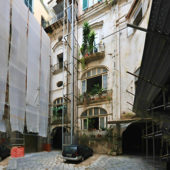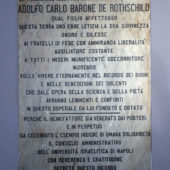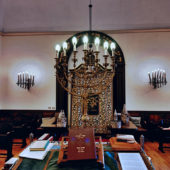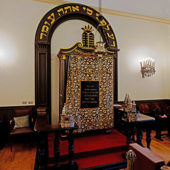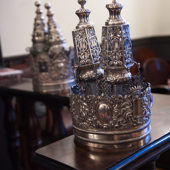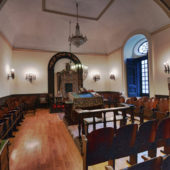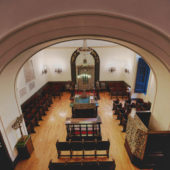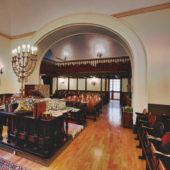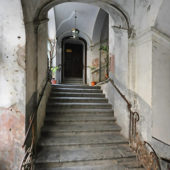There is a record of Jews living in Naples as early as the 1st Century.
From the time the city was under Roman rule 2000 years ago there have been Jews in Naples. By 536 AD, the Jewish community in Naples was large enough and economically able to wage war against the Goths and Byzantines, who also lived in the region. By 1159, when Benjamin of Tudela visited Naples, he reported that 500 Jewish families lived in the city. In 1288, Dominican priests spread anti-Jewish sentiment, with the result that the Kingdom of Naples expelled Jews and in 1293, any Jews remaining in Naples were forced to convert. In the intervening 200 years Jews returned to the city as the first Jewish press was established in the city in 1493.
In 1492, many Jews who had been expelled from Spain immigrated to Naples, where King Ferdinand of Naples offered them protection. However, only three years later the French conquered the area and persecuted the Jews. In 1510, Spain won control of Naples and the Jews were expelled again, with the exception of those who were willing to pay 300 Ducati to stay. By 1535 the price to stay in Naples was raised, forcing many Jews to leave and soon all had left the city. In 1731 Jews were allowed to return in Naples. By 1831, a small group of Jews lived in the Maltese Cross Hotel, and one of the rooms served as a synagogue. Ten years later the famous Rothschild (banking) family set up an office in Naples and purchased the Villa Pignatelli, which, according to some, served as the Jewish community center. In 1863 the Rothschild’s Naples office was closed and in 1867 the Villa Pignatelli was also sold. The next year the Jewish community rented space in Via Cappella Vecchia, for its community center. The Naples Synagogue was inaugurated in 1864, due to the influence of Baron Rothschild.
There were nearly 1,000 members of the Naples Jewish community in 1920. Between 1942 and 1943, fifty Neapolitan Jews were saved from deportation by the Germans. They became “guests” of families in the small, nearby town of Caserta. Due to these brave and kind-hearted townspeople’s complicity, civil disobedience and silence, these fifty Neapolitans avoided the dire consequences of deportation to concentration camps. After WWII, the Jewish community declined to 600 to 700 members. Today, there are only approximately 200 Jews living in Naples.
There are two marble statues in the entrance of the synagogue; one bought by the community president Dario Ascarelli in 1910 and the other which commemorates the deportation of Neapolitan Jews during WWII. Restoration work was performed in 1992 and the large conference room was re-opened after the work was completed. The synagogue is nondescript on the exterior, tucked away off of a small, cobblestone courtyard, utilizing rooms in an old, four-storey building which looks like it is comprised of private apartments. Some American visitors record finding it difficult to find the synagogue and upon asking people on the street where the synagogue was, were eyed suspiciously as to what their motives were in asking – i.e. friend or foe. After their bags are checked for weapons, they were shown where the synagogue was, they pulled a string, which rang a bell and were warmly greeted with “Shabbat Shalom.” They were reminded that not all Jews experience the freedom in worship that they, as American Jews, have experienced.
The prayer room is two rooms opened up with a large archway to make a single room. Ivory colored walls, gold cornicing and gray ceilings are punctuated by lovely, inset, tall, arched, paned windows with shutters. The bimah is situated in the center of the prayer room, featuring the tivah (reader’s desk), simply carved of wood, with turned wood balustrades along the sides. A large, finely wrought, gilded, menorah rises from the front of the tivah. Oriental carpets lie on the wood floor in back and in front of the bimah. Against the wall at the front of the prayer room, on the red platform up a few steps, is the Aron Kodesh. It is simply carved in dark wood and surrounded by a dark wood arch. Twin tablets containing the Ten Commandments written in Hebrew sit atop the Aron Kodesh. A dark, turned wood balustrade runs along the sides and partially across the front of the platform. An elegant crystal and brass chandelier drops down between the Aron Kodesh and bimah. Upstairs the women’s gallery occupies the back half of the room. It is separated from the main sanctuary by a wood turned balustrade. Simply carved wood pew-seats run along the sides only of the front of the prayer room, and fill the second half of the room.

